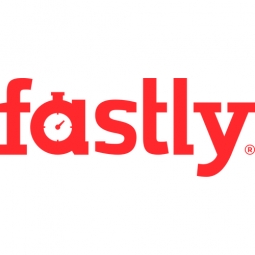Technology Category
- Platform as a Service (PaaS) - Application Development Platforms
- Sensors - Temperature Sensors
Applicable Industries
- Cement
- Retail
Applicable Functions
- Procurement
- Quality Assurance
Use Cases
- Traffic Monitoring
- Transportation Simulation
Services
- Cloud Planning, Design & Implementation Services
- Testing & Certification
About The Customer
Shoptimize is a leading provider of AI solutions for retail and direct-to-consumer (D2C) platforms. The company's specialized SaaS platform is designed to scale so that retail/D2C brands can provide a friction-free online experience, regardless of the number of users online. Shoptimize is expanding its global footprint beyond India and APAC to support customers ranging from traditionally offline enterprises entering the eCommerce space to startups and digitally-native brands. The company's platform is relied upon by hundreds of D2C retailers for providing seamless shopping experiences, especially during peak times that are difficult to anticipate.
The Challenge
Shoptimize, a pioneer of AI solutions for direct-to-consumer (D2C) retail platforms, was facing challenges in scaling its services. The company needed to provide a seamless online experience for its users, regardless of whether there were 5,000 or 5 million users online. The company was also looking for a next-generation Web Application Firewall (WAF) solution that could offer performance and PCI-DSS compliance at scale. Their previous WAF providers were not able to meet the caching challenge and were too expensive for effective customer onboarding. Shoptimize needed a solution that could offer predictable costs, scale as needed, and integrate with their existing tech stack. They also required a low-latency WAF to block spam traffic and bad bots without slowing down or blocking desirable traffic.
The Solution
Shoptimize found its solution in Fastly's edge cloud platform and WAF. Fastly's platform offered high cache hit ratios (CHRs) with the flexibility and control that empowered Shoptimize's developers to deliver fast and efficient ecommerce experiences. Fastly's WAF was able to block spam traffic and bad bots without affecting desirable traffic. The migration to Fastly's platform was simple, straightforward, and fast. Fastly's user-friendly onboarding included setup and support to align Shoptimize's VCL snippets with Fastly's configuration, ensuring flawless application performance after the changeover. Fastly's Image Optimizer was also used to seamlessly scale images at the edge to suit the end user's device, leading to a 30% improvement in page load times and higher conversion rates for Shoptimize's customers.
Operational Impact
Quantitative Benefit

Case Study missing?
Start adding your own!
Register with your work email and create a new case study profile for your business.
Related Case Studies.

Case Study
System 800xA at Indian Cement Plants
Chettinad Cement recognized that further efficiencies could be achieved in its cement manufacturing process. It looked to investing in comprehensive operational and control technologies to manage and derive productivity and energy efficiency gains from the assets on Line 2, their second plant in India.

Case Study
Improving Production Line Efficiency with Ethernet Micro RTU Controller
Moxa was asked to provide a connectivity solution for one of the world's leading cosmetics companies. This multinational corporation, with retail presence in 130 countries, 23 global braches, and over 66,000 employees, sought to improve the efficiency of their production process by migrating from manual monitoring to an automatic productivity monitoring system. The production line was being monitored by ABB Real-TPI, a factory information system that offers data collection and analysis to improve plant efficiency. Due to software limitations, the customer needed an OPC server and a corresponding I/O solution to collect data from additional sensor devices for the Real-TPI system. The goal is to enable the factory information system to more thoroughly collect data from every corner of the production line. This will improve its ability to measure Overall Equipment Effectiveness (OEE) and translate into increased production efficiencies. System Requirements • Instant status updates while still consuming minimal bandwidth to relieve strain on limited factory networks • Interoperable with ABB Real-TPI • Small form factor appropriate for deployment where space is scarce • Remote software management and configuration to simplify operations

Case Study
How Sirqul’s IoT Platform is Crafting Carrefour’s New In-Store Experiences
Carrefour Taiwan’s goal is to be completely digital by end of 2018. Out-dated manual methods for analysis and assumptions limited Carrefour’s ability to change the customer experience and were void of real-time decision-making capabilities. Rather than relying solely on sales data, assumptions, and disparate systems, Carrefour Taiwan’s CEO led an initiative to find a connected IoT solution that could give the team the ability to make real-time changes and more informed decisions. Prior to implementing, Carrefour struggled to address their conversion rates and did not have the proper insights into the customer decision-making process nor how to make an immediate impact without losing customer confidence.

Case Study
Digital Retail Security Solutions
Sennco wanted to help its retail customers increase sales and profits by developing an innovative alarm system as opposed to conventional connected alarms that are permanently tethered to display products. These traditional security systems were cumbersome and intrusive to the customer shopping experience. Additionally, they provided no useful data or analytics.

Case Study
Ensures Cold Milk in Your Supermarket
As of 2014, AK-Centralen has over 1,500 Danish supermarkets equipped, and utilizes 16 operators, and is open 24 hours a day, 365 days a year. AK-Centralen needed the ability to monitor the cooling alarms from around the country, 24 hours a day, 365 days a year. Each and every time the door to a milk cooler or a freezer does not close properly, an alarm goes off on a computer screen in a control building in southwestern Odense. This type of alarm will go off approximately 140,000 times per year, equating to roughly 400 alarms in a 24-hour period. Should an alarm go off, then there is only a limited amount of time to act before dairy products or frozen pizza must be disposed of, and this type of waste can quickly start to cost a supermarket a great deal of money.




